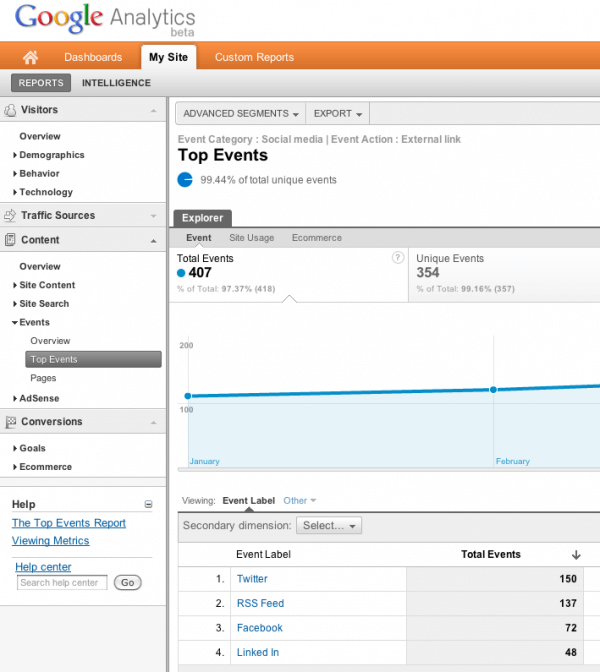Checking Out the Undiscovered Area: Data That Google Analytics Goals Can not Track
In the realm of digital analytics, Google Analytics stands as a stalwart tool for tracking online activities and providing beneficial understandings. Nevertheless, there exists a vast stretch of information that exists beyond the reach of its conventional tracking devices. These uncharted regions hold important info relating to customer actions, offline interactions, cross-device trips, and evasive dark social engagements that are vital for a thorough understanding of a brand name's digital landscape. As we browse with the limitations of Google Analytics, we uncover a world of untapped potential waiting to clarify the ins and outs of modern-day consumer actions and real effect of digital methods.
User Habits Beyond Clicks
In examining individual habits beyond clicks, it is important to dive deeper right into the interactions and activities that customers handle a site. While clicks provide important insight into customer interaction, recognizing just how customers navigate via a site, the pages they check out, the time invested in each page, and the activities they execute is important for a thorough evaluation. By tracking user habits beyond clicks, services can gain a deeper understanding of user preferences, passions, and intent, permitting for more targeted and personalized marketing techniques.
Analyzing individual actions beyond clicks also enables organizations to determine prospective discomfort factors in the individual trip, maximize conversion paths, and enhance the overall user experience. By examining metrics such as scroll depth, type submissions, video views, and other on-page communications, organizations can gain important understandings right into customer engagement and fulfillment levels (what data is google analytics goals unable to track). This data can notify internet site design enhancements, material optimization techniques, and conversion rate optimization initiatives, ultimately causing an extra effective and easy to use web site
Offline Interactions and Effect

Tracking offline communications can supply a much more holistic sight of customer behavior and aid organizations make informed decisions. By incorporating offline data with on the internet analytics, services can gain a much deeper understanding of their consumers' choices, habits, and the performance of their advertising and marketing initiatives.
Numerous methods can be employed to track offline communications, such as making use of distinct promo codes, dedicated phone numbers, or developing custom-made landing pages particular to offline projects. By bridging the space in between online and offline interactions, organizations can maximize their advertising and marketing strategies and improve the overall client experience (what data is google analytics goals unable to track). Embracing the complexity of individual behavior across both offline and on the internet networks is crucial for a thorough analysis and successful organization growth
Cross-Device Trip Insights
Taking a look at the interconnected paths users take across numerous gadgets offers valuable understandings into their behavior and preferences. By tracking individuals across tools, services can gain an extra all natural view of their communications, enabling for more targeted his comment is here and individualized advertising and marketing strategies.
Cross-device journey insights provide a much deeper understanding of exactly how users involve with brand names and material. For example, a consumer could look into an item on their mobile tool during their commute, proceed their expedition on a desktop at the office, and lastly purchase through a tablet computer at night. By capturing these touchpoints, businesses can tailor their messaging and offerings to fit the customer's choices at each stage of the trip.
Multi-Touch Attribution Challenges
With several interactions affecting a conversion, understanding which touchpoints are most significant can be complex. Marketing professionals often have a hard time to consolidate information from various resources and systems to create a cohesive view of the consumer journey.
Another obstacle in multi-touch acknowledgment is the lack of a standard strategy. Different models, such as straight, time decay, or U-shaped attribution, may yield differing results, making it testing to compare efficiency accurately. The surge of privacy guidelines and the enhancing emphasis on information security include another layer of intricacy. Marketers should browse these policies while still collecting the essential information for attribution evaluation. Essentially, taking on multi-touch acknowledgment challenges calls for a nuanced understanding of information interpretation, assimilation, and compliance to obtain purposeful insights for maximizing advertising strategies.
Uncovering Dark Social Involvements
Offered the complexities of multi-touch attribution difficulties, marketing professionals are significantly turning their attention to revealing dark social engagements in order to obtain an extra extensive understanding of the client trip. Dark social describes social sharing that occurs outside of conventional social media sites platforms and is harder to track using standard analytics tools. This concealed type of social involvement typically occurs with private messaging applications, email, or direct sharing of Links, making it challenging for marketing experts to attribute web traffic and conversions properly.

Conclusion
Finally, Google Analytics goals give basics valuable understandings into individual habits, yet there are limitations to what they can track. Checking out undiscovered data such as offline interactions, cross-device trips, and dark social engagements can use a more extensive understanding of customer interactions. By delving right into these untapped sources of details, companies can obtain a much deeper understanding of their target market and make more informed choices to boost their overall advertising approaches.
In assessing customer actions beyond clicks, it is vital to delve deeper into the interactions and actions that customers take on a website. While clicks supply useful understanding into user involvement, recognizing how users browse through a website, the web pages they visit, the time invested on each web page, and the actions they carry out is necessary for an extensive analysis. By tracking user behavior beyond clicks, businesses can acquire a much deeper understanding of customer preferences, interests, and intent, allowing for more targeted and personalized marketing techniques.
Examining individual actions past clicks additionally allows companies to recognize potential discomfort points in the individual trip, optimize conversion courses, and improve the total individual experience. Exploring uncharted information such as offline interactions, cross-device trips, and dark social interactions can supply a more thorough understanding of individual communications.